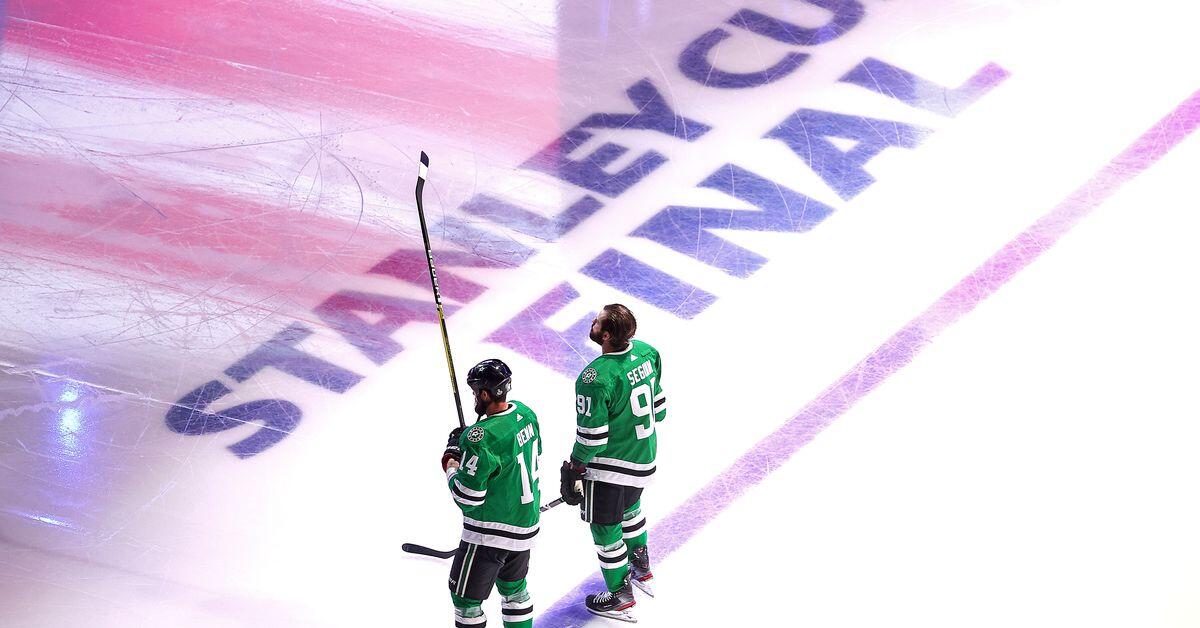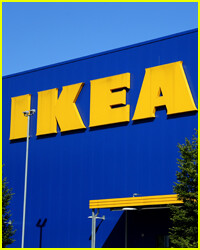Of the last ten Cup winners, only two teams were not returning or future returning champions. There’s no simple, or single formula to winning big. Sure, some people will argue with slogans like “defense wins championships” but defense doesn’t win championships. Great teams do. And every great team is a collection of their own unique peculiarities. Even Michael Jordan’s iconic Bulls team wasn’t defensive so much as a team that could shift identities from the regular season to the playoffs. Good teams have an identity. Great teams can adjust their identity
If there’s a common ingredient in hockey, it’s consistency. Outliers like St. Louis and Washington were teams that, up until that point, were strong teams with strong pedigrees. So sure, it can feel validating to see teams like Montreal and the Islanders be the plucky underdogs everyone roots for, but let’s face it. Nobody wants to be the team that competes to lose last. They want to be the team soaked in celebration beer that everyone suddenly has strong opinions about.
And the Stars, of all people, should know the feeling. They were also Cup winners who encountered strong opinions about celebrating the Right Way when Guy Carbonneau chucked the Cup from a second-story window at Vinnie Paul’s house (though he never admitted it). If the Stars want to make any of this happen, Dallas is gonna have to have something in common with Tampa.
Do they? Over the last seven seasons, the Lightning have seventy playoff wins. Dallas has twenty-eight. Tampa’s in a league of their own. Even if Tampa doesn’t return to the Finals for a potential threepeat (if any team has the capacity to do this, it’s definitely this team), the blueprint is there. As I figured this could be a fun exercise, I found that Dallas stacks up against the Lightning surprisingly well in some very key categories.
New and improved personnel
Let’s start with the leadership. If you’re not familiar with Tampa’s struggles in the 90’s, please do yourself a favor and read on. Between the Yakuza, ‘Jed Clampett’, and Better Call Saul moments, their financial struggles have all the ingredients of a 90’s noir thriller. While Steven Stamkos and Victor Hedman were drafted before the arrival of Steve Yzerman and Al Murray in 2010 (LA’s former scouting director), a lot of new faces were brought in to flesh out the eventual Cup champs.
Despite what Pierre McGuire tries (and fails) to tell you, Tampa actually is one of those “analytics teams.” Yzerman was brought in with Michael Peterson, their Director of Hockey Analytics. He came from baseball, having worked as a data consultant for the Tampa Bay Rays and Cleveland Indians. Olympic gold medalist and blade whisperer Barb Underhill was brought in to improve the skating of prospects and players who needed it, like — most critically — Brayden Point.
Along the way they did things that were considered ‘against the grain’: drafting a goalie in the first round (Andei Vasilevsky), being unafraid of less size and more skill with the drafting and signing of Palat, Kucherov, Johnson, and Gourde. They also haven’t been afraid to build with someone else’s blocks. Except for Hedman, their blueline was traded for. It cost them six picks total (including four firsts), four warm bodies, Ben Bishop, and Jonathan Drouin.
The Stars were dealt a different hand. They experienced financial struggles of the more milquetoast variety. No yakuzas or Beverly hillbillies: just good ole’ fashioned bankruptcy. Tom Gaglardi took over from Tom Hicks’ bankruptcy years in 2011. Then came Jim Nill. He brought Joe McDonnell with him to become the Director of Amateur Scouting. The most high profile hires were Rich Peverley in 2015 as Dallas’ Player Development Coordinator and Jeff Reese as their goaltending coach. The Stars have experienced a marked improvement over the development of their players since then, and even though Anton Khudobin and Ben Bishop are veterans of the game, they’ve had career years under Reese’s tutelage, which wouldn’t be particularly notable if Jake Oettinger didn’t look just as sharp.
It’s not a lot. And it’s not as sexy. But just because Dallas hasn’t been as exciting in terms of internal movement and personnel doesn’t make them inferior as a general rule (in principle at least, otherwise it’s hard to argue against Tampa’s results). Over the last several decades, Dallas has won more playoff series than most of their peers. Drafting wise, they’ve graded extremely well as a team that consistently finds talent outside the first round. And between Jason Robertson fighting for the Calder and Miro Heiskanen fighting for a Norris, the Stars seem poised to be a successful team with the current youth movement.
Still, it’s important to note the differences. Figure skaters and data specialists might seem like odd points of contact to improve a hockey team, but this canopy approach is critical to development in general. I’ve always worried that Dallas doesn’t have enough outside voices to contrast what sometimes feels like an insulated bunch. It’s not a criticism so much as an observation. With that out of the way, what about the on-ice product?
Tale of the Tape: By the Numbers
Dallas Stars team card over the last three seasons. Courtesy of JFreshHockey
Over the last three seasons, Dallas is kind of unlike any other team in the NHL. I find this fascinating because they used to be unlike any other team; just from the other side. Under Ruff, they were all offense and no defense. Since then, they’ve had three different coaches adopting a similar style of all defense and no offense. It’s a strange turnabout for a GM who’s overseen the two competing philosophies.
I don’t consider it a knock on Nill. I’ve seen fans make the argument that the turnabout was an overcorrection to their loss to St. Louis in 2016, but I suspect it’s more nuanced than that. Especially since Nill didn’t actually do anything the season directly after. He just let Alex Goligoski walk, and brought in some veteran stopgaps.
What’s interesting about Dallas is how they’re a contradiction even on ice. Since 2018, they’re bad at even-strength goal-scoring, but elite at goal-scoring on the man advantage. They are elite at even-strength defending, but bad at defending on the man disadvantage. It’s weird, but let’s move on to the obvious point that Dallas just isn’t as good offensively as Tampa.
Dallas versus Tampa offensively. Courtesy of JFreshHockey
As bad as Dallas’ even-strength offense has been, their power play got it done this season even without Seguin and Radulov. Although it’s possible this actually helped, as counterintuitive as it sounds. I wonder what Hintz and Robertson’s power play time would have looked like had both been healthy. It’ll be a good problem to have moving forward.
This comparison might seem disingenuous. ‘Well no duh Tampa has a better offense.’ Sure, but if Dallas wants to be a better team, they have find to find ways to score more. In which case, let’s talk about the Islanders. New York took Tampa to seven. It’s not shocking to learn that NYI was a better goal-scoring team than Dallas in the regular season. But you might be shocked to learn that they were also 4th best in the playoffs this year in goals per game.
Here’s something else: 26th, 30th, and 31st. That’s been Dallas’ rank the last three seasons in first period goals. Meanwhile — 10th, 24th, and 17th. That’s Trotz’ defense-first Islanders in first period goals. It’s nothing spectacular, but it does imply that being defensive doesn’t mean starting slow. You can be defensive and still set the tone. Dallas, on the other hand, often finds themselves trailing (they rank 20th in time spent playing from behind). The Islanders were also 1st in the regular season in expected goals-for per 60 when up by one, implying that they know to calibrate, and apply pressure at critical times instead of superficially shifting between ‘take chances when you need a goal’ versus ‘lock it down when you don’t.’
Dallas versus Tampa defensively. Courtesy of JFreshHockey
Defensively, Dallas was the superior team this year. No surprise there. But I think the more important takeaway is defensive consistency. EV defense and defense on the PK are obviously not the same thing. Perhaps the PK is driven more by individual performers while EV defense is driven more by systems. I don’t know which is which, but I do know that players like Esa Lindell, Blake Comeau, and Radek Faksa all struggled. With Lindell on the ice, the PK bleeds shots right in front of the crease, and around the left dot. With Comeau, too many shots get through on the right. Faksa can’t cover the point or the circles. Their PK struggles go back multiple seasons too.
Conversely, McDonagh kept the front of the goal untouched. Barclay Goodrow didn’t let anything through the royal road area. And Blake Coleman managed to track the entire scoring chance area of the ice. Either Dallas’ goaltending is suffering because of the PK system, or because of the players it chooses to play on the PK. If Dallas can correct this part of their game, they look like real contenders in this area. Unfortunately everyone who underperformed is returning, but overall, Dallas compares well.
Dallas versus Tampa in terms of playdriving. Courtesy of JFreshHockey
In terms of playdriving, I’ve got no asterisk for this one. Dallas is an elite, playdriving team. Granted, these differentials are driven by the fact that Dallas skews so heavily towards defense, but they’re still controlling play at a high level, and better than Tampa in key categories.
Then there’s this. Last month, Elliotte Friedman interviewed Steve Valiquette, who works for Clear Sight Analytics. Valiquette’s big statistical revelation was that high danger goals against at five-on-five (per 60) seemed to be a very good preliminary predictor of playoff success. Dallas was 4th last season, and 1st this season. Tampa was 18th this season (oops), but 1st last season. Meanwhile, Montreal was second this year. Looking at high danger goals against between the last two seasons, Dallas is right there with Tampa.
High danger goals against and expected rebound goals against. Courtesy of MoneyPuck.
The Verdict?
In terms of defense, and playdriving, Dallas compares well. They’re better in six of ten variables tracked using TopDownHockey’s models. Ideally, a healthier roster will improve the offense. And they don’t let high danger goals in. Nice! Well, not so fast. Dallas has learned the hard way that progress is not linear. They had some key injuries and missed the playoffs right after going to the Stanley Cup Finals. But taking for granted a bounceback because of something that is never guaranteed (health) would be a fool’s errand. Especially with the age of its roster. But on the surface, the ingredients are all there to ice a very competitive team. What’s gonna be the difference?
It’s hard to say. For all the similarities with the on-ice product, there are a ton of differences elsewhere. Perhaps the biggest one is Tampa’s willingness to part with assets. Tampa had six regulars they traded for. Dallas had three. Nill doesn’t have the cap to sign whoever he wants. In fact, he may not be able to sign anyone. Although the Bishop news might clarify things. But a trade circumvents cap issues.
Is that Nill’s style, though?
He’s made big trades, but they happened when the team was young and had many needs. Is he willing to make a trade when the needs are less obvious? By all accounts, Dallas is a place Seth Jones would be willing to go. It’s not as simple as giving the recently boughtout Ryan Suter some money, but Jones could clear up a lot of confusion about the blueline’s future. Especially if, like me, you believe his ‘bad analytics’ aren’t actually making that argument. What are the chances Nill wants to do anything other than run it back?
There’s probably some justification to that approach. But if there’s a common thread to Tampa’s formula, it’s that optics don’t matter. They wanted a top four defenceman, so they went out and got one. They wanted to strengthen their middle six, so they went out and got two. Talking heads might call these moves “character signings” but in reality, they were just good players brought in to fill a need the team recognized it had. If Dallas wants to be more than just a dime-a-dozen challenger, they’ll be honest about what they need, and go get it. There’s nothing unclear about what they need either. They need another forward who can score at even strength (medium priority), a strong penalty killing forward (low priority), and a defender who can play tough minutes and be effective on the PK (I’d argue: high priority).
Teams are doing silly things right now. The real question is how Nill and management sees the team. Fans sometimes rib Nill for his ‘I like where we’re at’ line. I find it revealing for different reasons. He’s used that line in seasons where Dallas looked good, but not great. That’s my question: is he okay with being the David that can one day beat Goliath? I certainly hope not. David might have beaten Goliath, but who would you rather be in the rematch?
All stats courtesy of Natural Stat Trick, HockeyViz, JFreshHockey, and MoneyPuck.
Originally found on Read More


![[VIDEO] Meghan McCain Just Can’t Stop Blasting Biden Lately…](https://manateeherald.com/wp-content/uploads/2021/06/300-4IokkF.jpeg)




